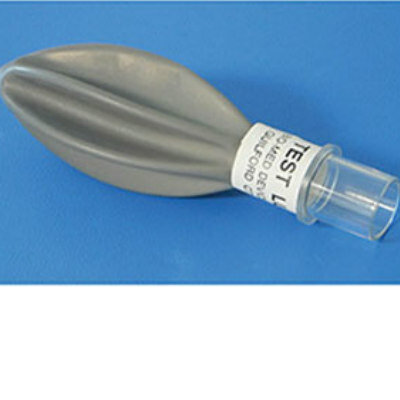Novel SMP Responds Directly to Enzymatic Activity
|
By HospiMedica International staff writers Posted on 14 Mar 2019 |

Image: A shape memory polymer (SMP) that responds to enzymes could promote healing (Photo courtesy of Syracuse University).
A new study shows how a novel shape memory polymer (SMP) that responds to exposure to enzymes could soon be used to treat open wounds, infections, and cancer.
Developed by researchers at Syracuse University (NY, USA) and Bucknell University (Lewisburg, PA, USA), the new SMP includes a shape fixing component, poly(ε-caprolactone) (PCL), that is vulnerable to enzymatic degradation, and a shape memory component, Pellethane, that is enzymatically stable. As the shape fixing PCL component undergoes enzymatically-catalyzed degradation, the SMP can return to its original, programmed shape. It requires no additional trigger, such as a change in temperature, and could thus respond to cellular activity.
The researchers also analyzed material properties, shape memory performance, and cytocompatibility of the enzymatically-catalyzed shape memory response. The results demonstrate enzymatic recovery, as contraction of tensile specimens, and that shape recovery is achieved by degradation of the PCL shape-fixing phase. In addition, both the materials composing the SMP and the process of enzymatic shape recovery were cytocompatible. The study describing the SMP was published on January 15, 2019, in Acta Biomaterialia.
“We anticipate that the materials we're developing could have broad application in health care. For example, our SMPs could be used in drugs that only activate when the target cells or organ are in the desired physiological state, in scaffolds that guide tissue regeneration in response to the behavior of the regenerating tissue itself, and in decision-making biosensors that guide patient treatment more effectively,” said senior author Professor James Henderson, PhD, of Syracuse University. “We're very excited to have achieved these first enzymatically responsive SMPs.”
“The enzymatic sensitivity of the material allows it to respond directly to cell behavior. For instance, you could place it over a wound, and as the tissue remodeled and degraded it, the SMP would slowly pull the wound closed,” said lead author candidate Shelby Buffington, MSc, a biomedical engineering PhD candidate at Syracuse University. “It could be adapted to play a role in treating infections and cancer by adjusting the material's chemistry.”
SMPs include foams, scaffolds, meshes, and other polymeric substrates that have the ability to return from a deformed state (temporary shape) to their original (permanent) shape induced by an external stimulus, such as a temperature change, an electric or magnetic field, light, or a chemical solution. As well as polymers in general, SMPs also cover a wide property-range from stable to biodegradable, from soft to hard, and from elastic to rigid, depending on the structural units that constitute the SMP.
Related Links:
Syracuse University
Bucknell University
Developed by researchers at Syracuse University (NY, USA) and Bucknell University (Lewisburg, PA, USA), the new SMP includes a shape fixing component, poly(ε-caprolactone) (PCL), that is vulnerable to enzymatic degradation, and a shape memory component, Pellethane, that is enzymatically stable. As the shape fixing PCL component undergoes enzymatically-catalyzed degradation, the SMP can return to its original, programmed shape. It requires no additional trigger, such as a change in temperature, and could thus respond to cellular activity.
The researchers also analyzed material properties, shape memory performance, and cytocompatibility of the enzymatically-catalyzed shape memory response. The results demonstrate enzymatic recovery, as contraction of tensile specimens, and that shape recovery is achieved by degradation of the PCL shape-fixing phase. In addition, both the materials composing the SMP and the process of enzymatic shape recovery were cytocompatible. The study describing the SMP was published on January 15, 2019, in Acta Biomaterialia.
“We anticipate that the materials we're developing could have broad application in health care. For example, our SMPs could be used in drugs that only activate when the target cells or organ are in the desired physiological state, in scaffolds that guide tissue regeneration in response to the behavior of the regenerating tissue itself, and in decision-making biosensors that guide patient treatment more effectively,” said senior author Professor James Henderson, PhD, of Syracuse University. “We're very excited to have achieved these first enzymatically responsive SMPs.”
“The enzymatic sensitivity of the material allows it to respond directly to cell behavior. For instance, you could place it over a wound, and as the tissue remodeled and degraded it, the SMP would slowly pull the wound closed,” said lead author candidate Shelby Buffington, MSc, a biomedical engineering PhD candidate at Syracuse University. “It could be adapted to play a role in treating infections and cancer by adjusting the material's chemistry.”
SMPs include foams, scaffolds, meshes, and other polymeric substrates that have the ability to return from a deformed state (temporary shape) to their original (permanent) shape induced by an external stimulus, such as a temperature change, an electric or magnetic field, light, or a chemical solution. As well as polymers in general, SMPs also cover a wide property-range from stable to biodegradable, from soft to hard, and from elastic to rigid, depending on the structural units that constitute the SMP.
Related Links:
Syracuse University
Bucknell University
Latest Critical Care News
- CPR Guidelines Updated for Pediatric and Neonatal Emergency Care and Resuscitation
- Ingestible Capsule Monitors Intestinal Inflammation
- Wireless Implantable Sensor Enables Continuous Endoleak Monitoring
- Pulse Oximeter Index Offers Non-Invasive Guides for Fluid Therapy
- Wearable Patch for Early Skin Cancer Detection to Reduce Unnecessary Biopsies
- 'Universal' Kidney to Match Any Blood Type
- Light-Based Technology to Measure Brain Blood Flow Could Diagnose Stroke and TBI
- AI Heart Attack Risk Assessment Tool Outperforms Existing Methods
- Smartphone Imaging System Enables Early Oral Cancer Detection
- Swallowable Pill-Sized Bioprinter Treats GI Tract Injuries

- Personalized Brain “Pacemakers” Could Help Patients with Hard-To-Treat Epilepsy
- Microscopic DNA Flower Robots to Enable Precision Medicine Delivery
- Origami Robots to Deliver Medicine Less Invasively and More Effectively
- Improved Cough-Detection Technology Aids Health Monitoring
- AI Identifies Children in ER Likely to Develop Sepsis Within 48 Hours
- New Radiofrequency Therapy Slows Glioblastoma Growth
Channels
Surgical Techniques
view channel
Robotic Assistant Delivers Ultra-Precision Injections with Rapid Setup Times
Age-related macular degeneration (AMD) is a leading cause of blindness worldwide, affecting nearly 200 million people, a figure expected to rise to 280 million by 2040. Current treatment involves doctors... Read more
Minimally Invasive Endoscopic Surgery Improves Severe Stroke Outcomes
Intracerebral hemorrhage, a type of stroke caused by bleeding deep within the brain, remains one of the most challenging neurological emergencies to treat. Accounting for about 15% of all strokes, it carries... Read morePatient Care
view channel
Revolutionary Automatic IV-Line Flushing Device to Enhance Infusion Care
More than 80% of in-hospital patients receive intravenous (IV) therapy. Every dose of IV medicine delivered in a small volume (<250 mL) infusion bag should be followed by subsequent flushing to ensure... Read more
VR Training Tool Combats Contamination of Portable Medical Equipment
Healthcare-associated infections (HAIs) impact one in every 31 patients, cause nearly 100,000 deaths each year, and cost USD 28.4 billion in direct medical expenses. Notably, up to 75% of these infections... Read more
Portable Biosensor Platform to Reduce Hospital-Acquired Infections
Approximately 4 million patients in the European Union acquire healthcare-associated infections (HAIs) or nosocomial infections each year, with around 37,000 deaths directly resulting from these infections,... Read moreFirst-Of-Its-Kind Portable Germicidal Light Technology Disinfects High-Touch Clinical Surfaces in Seconds
Reducing healthcare-acquired infections (HAIs) remains a pressing issue within global healthcare systems. In the United States alone, 1.7 million patients contract HAIs annually, leading to approximately... Read moreHealth IT
view channel
Printable Molecule-Selective Nanoparticles Enable Mass Production of Wearable Biosensors
The future of medicine is likely to focus on the personalization of healthcare—understanding exactly what an individual requires and delivering the appropriate combination of nutrients, metabolites, and... Read moreBusiness
view channel
Philips and Masimo Partner to Advance Patient Monitoring Measurement Technologies
Royal Philips (Amsterdam, Netherlands) and Masimo (Irvine, California, USA) have renewed their multi-year strategic collaboration, combining Philips’ expertise in patient monitoring with Masimo’s noninvasive... Read more
B. Braun Acquires Digital Microsurgery Company True Digital Surgery
The high-end microsurgery market in neurosurgery, spine, and ENT is undergoing a significant transformation. Traditional analog microscopes are giving way to digital exoscopes, which provide improved visualization,... Read more
CMEF 2025 to Promote Holistic and High-Quality Development of Medical and Health Industry
The 92nd China International Medical Equipment Fair (CMEF 2025) Autumn Exhibition is scheduled to be held from September 26 to 29 at the China Import and Export Fair Complex (Canton Fair Complex) in Guangzhou.... Read more









.jpg)




